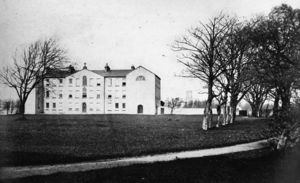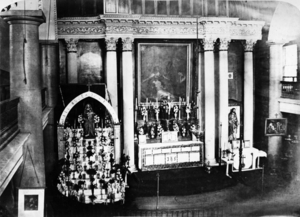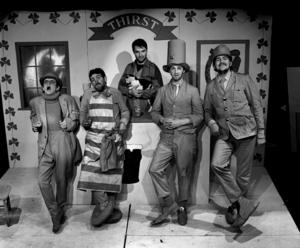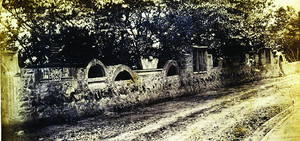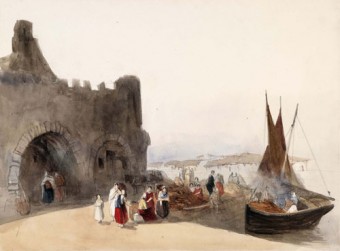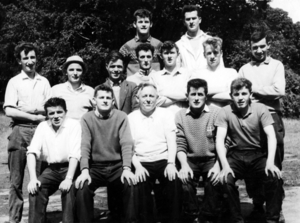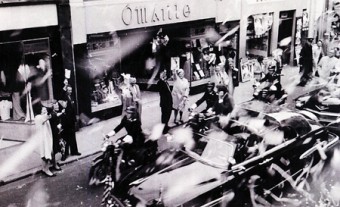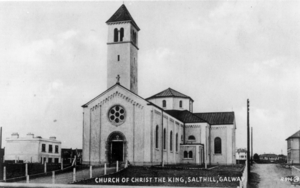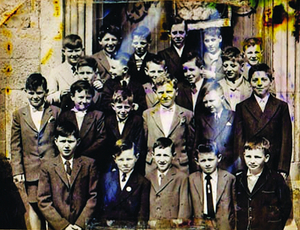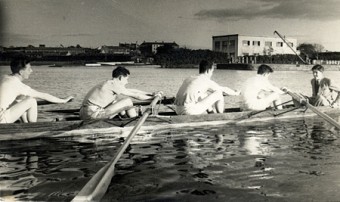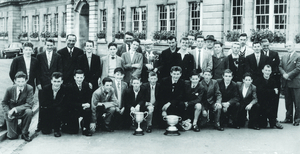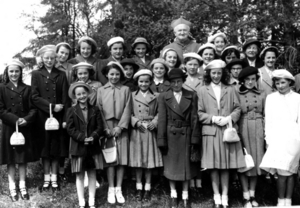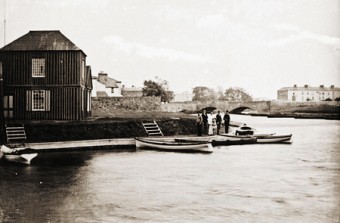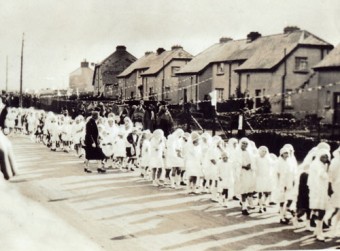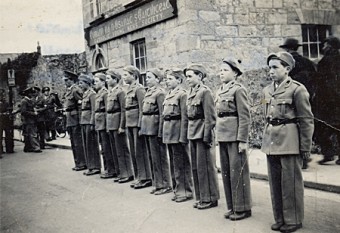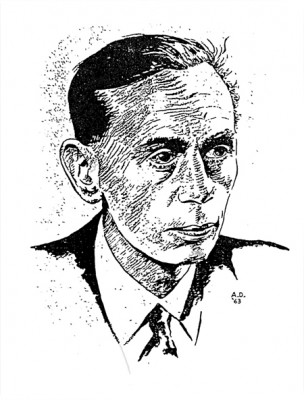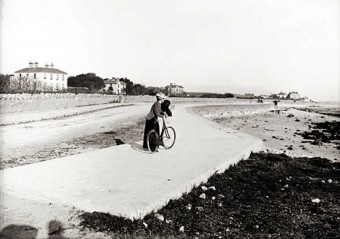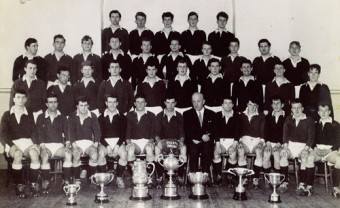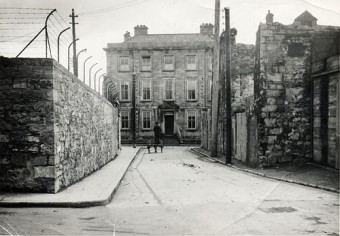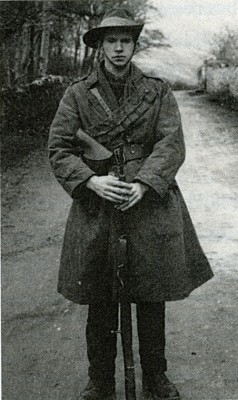‘A powerhouse of prayer’
Thu, Aug 08, 2013
The exact origins of the Poor Clare Sisters in Galway are not easy to trace. We know there was a convent of Clares, if not Poor Clares, here before 1640, based on an inscription on a headstone which read “Here lieth the body of Elizabeth Lynch, the Foundress of the Order of St. Clare who died 14th December 1626”. James Hardiman describes another headstone inscribed thus: “Here lieth the body of R. Mother Maria Gabriel, alias Helen Martin, first Abbess and religious of the Poor Clares of Galway who died on 14 January aged 68 in religion for 40. Pray for her Soul.” This suggests the nuns were in Galway since 1632 when she entered the order.
Read more ...The pro-cathedral, a brief history
Thu, Aug 01, 2013
“On Monday last (July 1st, 1816), Galway witnessed a scene unparalleled in her history, or in the history of the British Empire. It was an unusual but gratifying sight to behold Protestants and Catholics, the Civil and Ecclesiastical Corporations, the Secular and Regular Clergy, all clothed in their robes of office, preceded by their various insignias, and marching in solemn procession through the principal streets of the town – not for the purpose of reminding Catholic of the galling degradation under which he labours – not to keep alive those feuds which have so long distracted our wretched country – not to display with ascendancy, pride and intolerant bigotry, those shameful destructions which have hitherto been a barrier to the repose and happiness of Ireland – no – but to lay the foundation stone of an edifice, which being dedicated to the supreme worship of the deity, will at the same time be a monument to succeeding generations of the unanimity, concord and harmony which exists between those of every religious persuasion in this loyal and extensive county.
Read more ...Druid Theatre Company, the early years
Thu, Jul 25, 2013
For many years theatre in Galway was represented by regular productions from An Taibhdhearc and occasional productions by the Dramatic Society in UCG. Occasionally, other groups appeared but they never seemed to survive for very long — The Lamplighters, The D And I, The Galway Little Theatre Company, etc. Most of these were enthusiastic amateurs who often put on memorable shows. In 1969 an attempt was made to introduce semi-professional theatre to the city with the formation of The Galway Repertory Theatre, and two years later Frank Bailey founded the Celtic Arts Theatre, but sadly, both of these companies were short lived.
Read more ...Newtownsmith c1870
Thu, Jul 18, 2013
Newtownsmith was an important development outside the town wall on the northern side of the city in the late 18th and early 19th century. The project was undertaken by the governors of the Erasmus Smith Estate. In this suburb, the county courthouse was erected between 1812 and 1815, and a little later in 1824 the town courthouse was built. In 1823, it was objected to because there were several suitable sites for a new courthouse ‘immediately in the town’ and that it was ‘quite idle’ to lay foundations in Newtownsmith, or in any part of the suburb. Galway’s second bridge was completed in 1819 and it connected the courthouses with the new county and town gaols on Nuns Island which had been completed in 1810.
Read more ...William Evans of Eton and his old Galway watercolours
Thu, Jul 11, 2013
William Evans of Eton (1798-1877) was the drawing master of Eton College in England and was an accomplished artist who exhibited widely in London, Dublin, and Paris. He made a number of visits to the west of Ireland in 1835 and 1838 where he produced many studies and finished watercolours, mostly of Counties Galway and Mayo, a mixture of picturesque landscapes, market and street scenes, and what might be called peasant structures and peasant portraits.
Read more ...Our Lady’s Boys Club, a brief history
Thu, Jul 04, 2013
When OLBC was founded in 1940, the Government provided no out of school education for young people. There was a great need for social and recreational facilities. Such activity was virtually non-existent in the working class areas of Bohermore, Shantalla, The Claddagh, and ‘The West’. The critical core of the club was (and is) its generic youth club which met (and still meets) several evenings a week. The primary aim in those days was to show the boys ways and means of securing their own destiny.
Read more ...An hour to remember
Thu, Jun 27, 2013
It is hard to believe that president John F Kennedy’s visit to Galway only lasted one hour. It was timed with military precision and yet JFK seemed remarkably relaxed and enjoying himself thoroughly throughout. He landed by helicopter in the Sportsground where he was met by the mayor, Paddy Ryan, a group of schoolgirls from the Mercy National School all dressed in green white and gold, some members of the American legion, and a crowd of enthusiastic onlookers.
Read more ...Salthill Church, a brief history
Thu, Jun 20, 2013
A meeting of the residents of the Salthill area was held in the Pavilion Ballroom in June 1934 for the purposes of considering the necessity of erecting a church in Salthill. They unanimously expressed the urgency of building one to cater for the religious needs of about 300 families representing approximately 400 residents and a large number of summer visitors. At that time there were about 200 families from the Bishop’s Gate to Rockbarton and there was provision made for the building of close on 100 houses.
Read more ...The Claddagh National School
Thu, Jun 13, 2013
An advertisement in the Irish Independent in July 1931 invited tenders from competent builders for the erection and completion of the proposed new St Nicholas’ National School in the Claddagh. When the new school was built it was described as “An attractive rectangular building with a red tile roof made by the Galway Brick and Tile Company”. The outdoor toilets were at the end of the playground.
Read more ...Where there’s a will, there’s a way
Thu, Jun 06, 2013
Now that the Leaving Certificate exams are about to start and the rowing season is in full swing, we thought to share the following story.
Read more ...In their green and black jerseys...
Thu, May 30, 2013
Victory in the 1961 County Juvenile Hurling final for the Father Tom Burke’s team from the Claddagh in the same colours their grandfathers wore in the great days of hurling in South Park recalled memories of the Moores, the Macs, the Currans, and the Carricks.
Read more ...Calling Castlegar people
Thu, May 23, 2013
A report from the Educational Commission in Ireland in 1826 lists two hedge schools in the parish of Castlegar. The first of these was at Merlin Park, built by the landlord Mr Blake. The 40 boys and 20 girls who attended got free tuition. The second school was at Ballygurrane, a few hundred yards north of where Scoil Colmcille Naofa stands today. It was a thatched house which doubled as a church on Sundays. Each pupil paid one shilling and eight pence per quarter. There were 30 boys and 15 girls on the rolls. The thatched house was accidentally burnt down in 1827, and the school transferred to a stable in the village of Castlegar. Here, without desks or books, the teacher named Duggan from Bohermore taught his pupils as they sat around on stones as seats. Each morning he rode out on his donkey from Bohermore. His salary depended on the few pence he got from his students. He taught the three Rs through the medium of English.
Read more ...The Royal Galway Yacht Club
Thu, May 16, 2013
The first rowing club to be set up on the river was Corrib Rowing and Yachting Club, and shortly afterwards the Commercial Club was founded. The inauguration of yet another club in 1882, The Royal Galway Yacht Club, provided further competition in rowing and yachting. It contributed to regattas locally by fielding crews, being included on committees, and other rowing activities, and it seems to have had a very strong yachting section.
Read more ...The May procession
Thu, May 09, 2013
The month of May is named for and dedicated to Mary, the Blessed Virgin. Many people like to honour the Virgin during that month by putting up a May altar in their house, usually on a small table or sideboard covered with a white cloth. In the place of honour is a Marian picture or statue and it is decorated with May flowers. In some parishes they have a ceremony where they crown an image of Mary with paste jewels, and in others, they hold a May procession in which those taking part walk bareheaded (weather permitting), in decent costume and with reverent mien. Clergy and laity, men and women, are separated. The cross is usually carried at the head, and sometimes banners embroidered with sacred pictures. These often represent sodalities but should never be of military or triangular in shape.
Read more ...The Knights of Malta in Galway
Thu, May 02, 2013
The first unit of the Order of Malta in Galway began in 1937 when Dr Conor O’Malley was asked by the Marquis McSweeney, the then chancellor of the Irish Association, to recruit members to form an ambulance corps aimed initially at Connacht only.
Read more ...Kevin Faller, Galway poet
Thu, Apr 25, 2013
Kevin Faller was born in the Crescent in 1920. His father was John Patrick Faller and his mother was Madeleine Quinn from Tuam. They both died within six months of each other when Kevin was very young, so he and his brother Liam were brought up by their grandfather Stephen Faller. Kevin’s aunt Minnie, who was married to Nicholas O’Halloran, also helped to rear him.
Read more ...Walking the Prom
Thu, Apr 18, 2013
Towards the end of the 19th century, tourism interests in Galway used to advertise the Promenade as a place unrivalled in the country, where one could take the healthy invigorating salt air like nowhere else. In those times, it was just a narrow crooked roadway, very rough and untarred, and the footpath seemed to extend from Palmer’s Rock to roughly opposite the entrance to Rockbarton, if one is to judge from how it finishes in the foreground of our photograph, which was taken c1890. The road was known as the Lower Sea Road. The houses in the background are Belmore, owned by McDonoughs; Brinkwater, owned by Maurice De Courcey Dodd; and Maretimo, owned by the O’Beirne family.
Read more ...UCG Rugby Club
Thu, Apr 11, 2013
The rugby club in UCG was founded in 1874, which makes it the oldest such club in Connacht. They played in the Bateman Cup competition many times and won their first Connacht Senior Cup in 1897. They have held this trophy aloft 34 times in all, more than any other club in the west, and they have won the senior league 16 times. They won the Dudley Cup for the first time in 1905. Many of their players have played for Irish universities international teams, and 10 have been capped for Ireland, several while playing for UCG. One of those, Ciaran Fitzgerald, captained the British and Irish Lions. The UCG colours are maroon and white.
Read more ...Mayoralty House and Lower Cross Street
Thu, Mar 28, 2013
This photograph of Cross Street was taken in 1946. Early maps of the city show an open air altar at the end of the street. It was built by the Dominicans and used for various processions and Corpus Christi. The building facing us is Mayoralty House which was originally built in 1793 for a member of the Daly family. This family exclusively held the office of mayor from 1776 to 1816. It was probably built by James Daly, who was mayor in 1804, 1810, 1814, 1818, and 1819. The Dalys owned the house until the late 1840s. In Griffith’s Valuation in 1855, there is no mention of Mayoralty House, but a house fitting its description belongs to the Town Commissioners. These had replaced the mayor and corporation about 1935. It was later used as a police barracks.
Read more ...